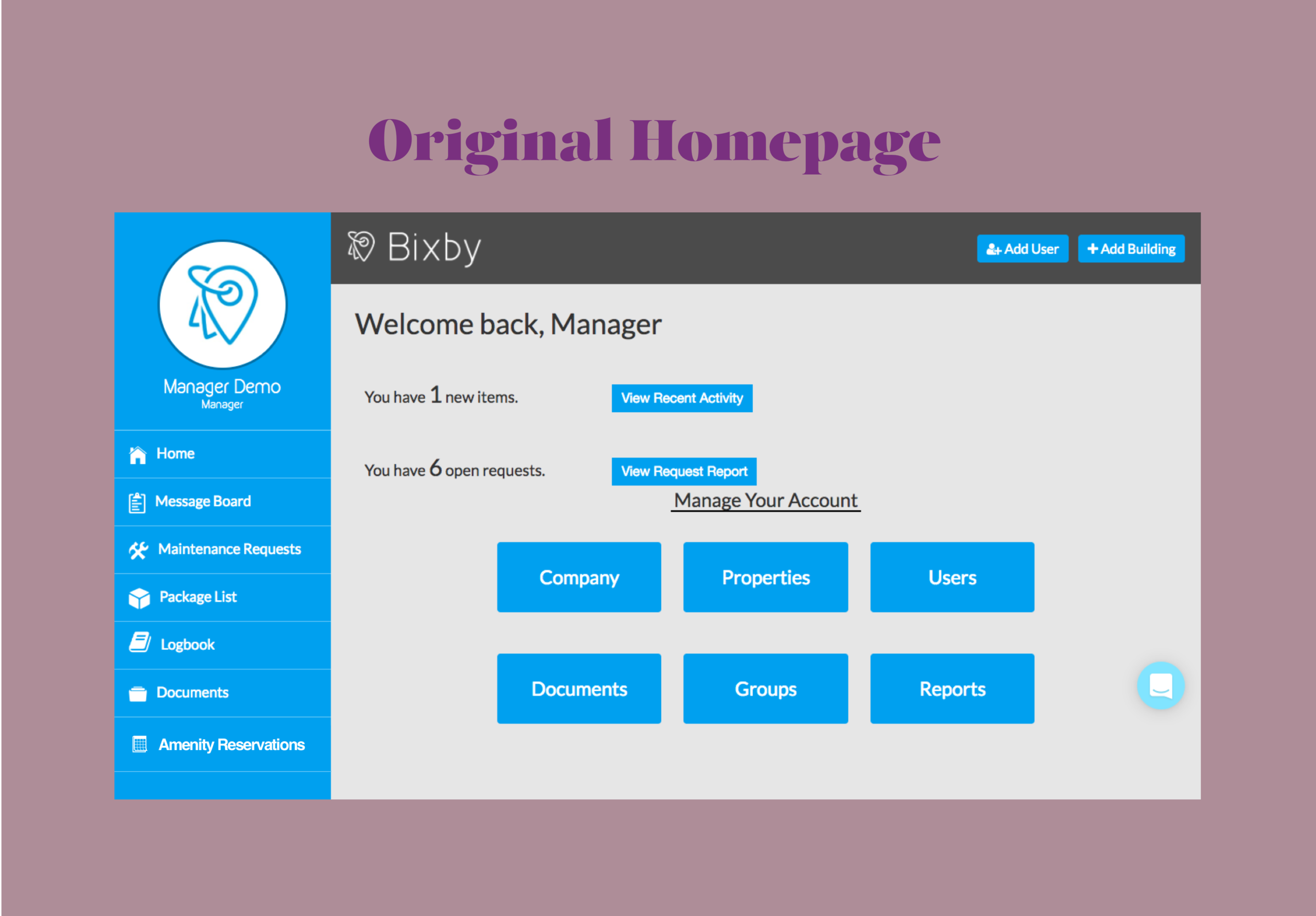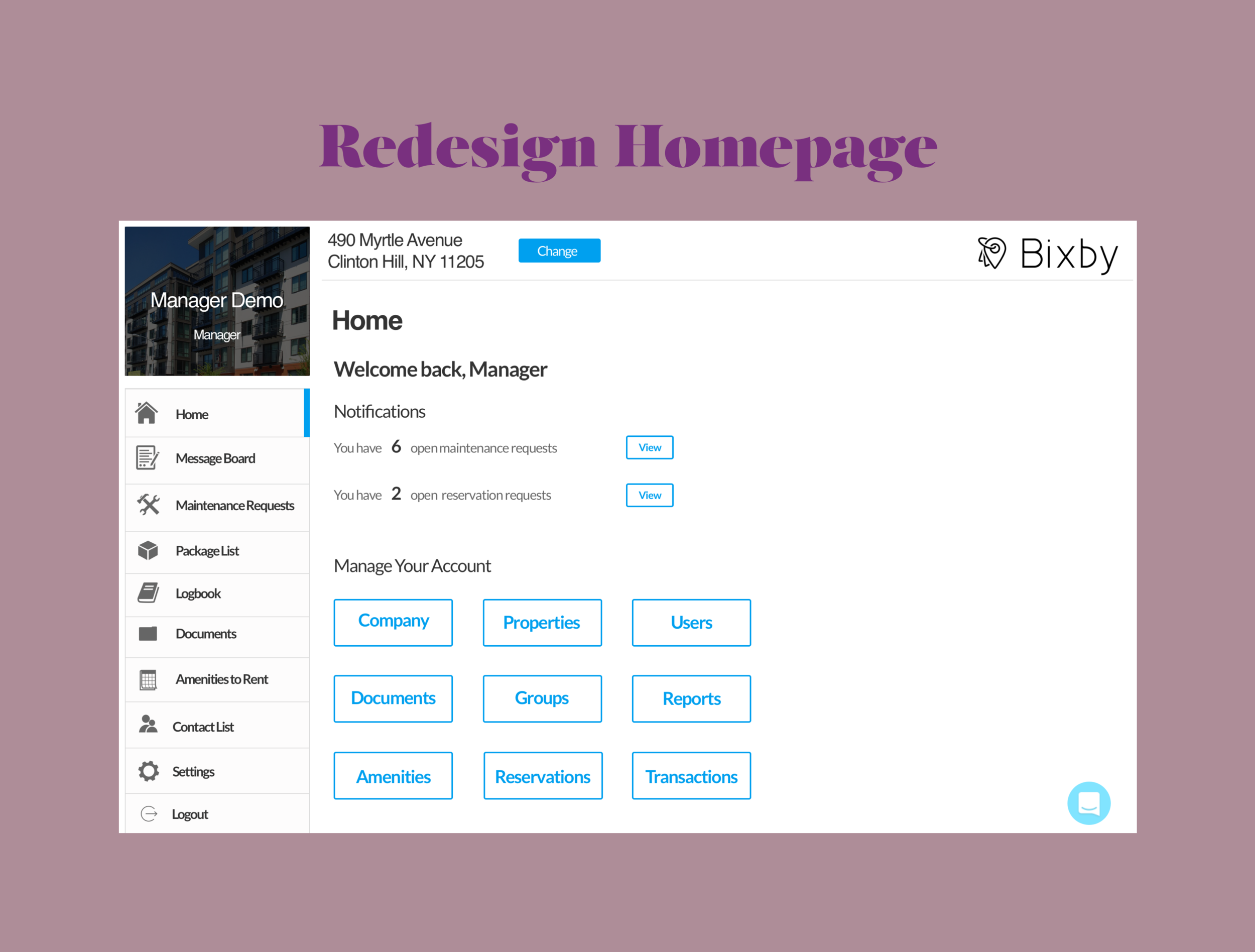Enterprise Software Design: Bixby Amenity Feature Integration
Research | Information Architecture | UX/UI Design | Prototyping | Production
Bixby
Bixby is a real-estate technology platform connecting building managers and residents.
They found that managers were manually processing reservation requests for communal spaces (eg. roof deck). My team of three UX designers was tasked to streamline the booking experience.
I led research and design for the manager’s feature which included interviewing, designing, and prototyping.
In addition, for developer handoff, I provided user stories, user flows, annotated wireframes, Sketch and Zeplin files, and the high-fidelity prototype (see “Manager’s Desktop Prototype”).
This feature is now live.
Client: Bixby is a platform connecting residents and building managers, bringing apartment living into the modern age
Problem: Building staff manually manages reservations and payments for amenities (eg. a game room, grill, or roof deck) which is inefficient and costly, especially when checks/cash are misplaced
Ask: To streamline reserving and managing amenities for both tenants and managers of luxury apartments
My Role: Lead research, strategist, and designer for the manager’s feature; Lead research and strategist for the tenant’s feature
Scope: Team of three / 20 Days / Mobile app and desktop website feature
Solution: An “Amenities” feature integrated into the current platform where managers can: manage listed amenities, view and take action on all reservations, as well as charge tenants
Status: Deployed
Research: User Interviews & competitive analysis
I determined the following the methodologies:
User interviews of building managers with amenities available to rent
User interviews of residents of buildings with amenities available to rent
Competitive matrix to understand Bixby's competitive landscape
Feature analysis of competitive / comparative products
We interviewed five building managers and five residents of luxury apartments.
Select questions for the managers:
What are you responsible for? What are your everyday tasks?
Do you rent out those spaces? What’s the process for renting those spaces? (if paid, how do you accept payment)? Are there limitations for reserving?
How do you manage and keep track the amenities?
Select questions for the residents:
What public/communal spaces do you have in your building?
When was the last time you used a space and what did you use it for?
Tell me about the process from finding to booking the space.
User Interview Synthesis:
Building managers:
Are very busy and need to eliminate manual work
Need to be able to create and edit amenity listings
Need payments easily tracked
Want to avoid recurring questions such as availability of amenities
Wants to easily notify residents about an amenity's availability
Residents:
Are young professionals
Use other booking platforms like OpenTable and expect certain standards
Are high-paying residents and expect good service
Prefer to talk with the doorman because of the immediacy
Need more transparency in the process if it must be online
Want to know an amenity's availability
Competitive Matrix:
To understand Bixby's competitive landscape, I mind-mapped Bixby's characteristics and narrowed it down to Bixby being specific to a building ("Building Specific") and a product for both the resident and building manager ("Multi Sided Marketplace"). This set up the following competitive matrix and Breather, AirBnB, WeWork, and BuildingLink as key competitors:
Competitive matrix with Bixby highlighted to indicate clearly where it lives against the competitive and comparative products.
Feature Analysis:
After I determined the Bixby's competitors and target users, I analyzed the best practices and design solutions currently for reserving spaces and managing those reservations, I put together an analysis of the features four competitive and comparative reservation sites utilized:
A snapshot of features pulled and compared across the four competitive and comparative booking products
design Solution Ideation
After facilitating an ideation session to get out all possible features, we utilized the MoSCoW method to prioritize which features to include in the designs.
We concluded the following features best address building managers' pain points and needs and must be highlighted in the design:
Pain Point/Need -> Feature
Eliminate manual work -> Automated booking requests, auto-populated calendar
Create and edit listings -> Create new and edit functions for amenities listings
Easily receive, track, and extract funds -> Transactions page for all reservations, extract funds options for completed reservations
See and confirm reservation requests -> Confirm/decline function on unconfirmed reservations page, list and calendar views for reservations
Our team then went through several rounds of collaborative ideation sessions (design studio) for the feature designs.
We came out with wireframes from each use case identified.
Design Studio
Snapshot of our design studio session
design, PROTOTYPE, TEST (REPEAT)
We completed two rounds of testing refining navigation and table designs.
Below is an example of one of the main screen flows for the manager:
In addition to interactions, the client requested UI upgrades aimed to make the design modern and cleaner:
Developer hand-off & Production
Wireframes, user flows, assets, and an InVision prototype were provided to the client and the design is now fully deployed.
Concluding thoughts
Designing enterprise software is energizing in that there are many components and vastly complex processes for which must be accounted.
Please reach out with feedback or comments!






